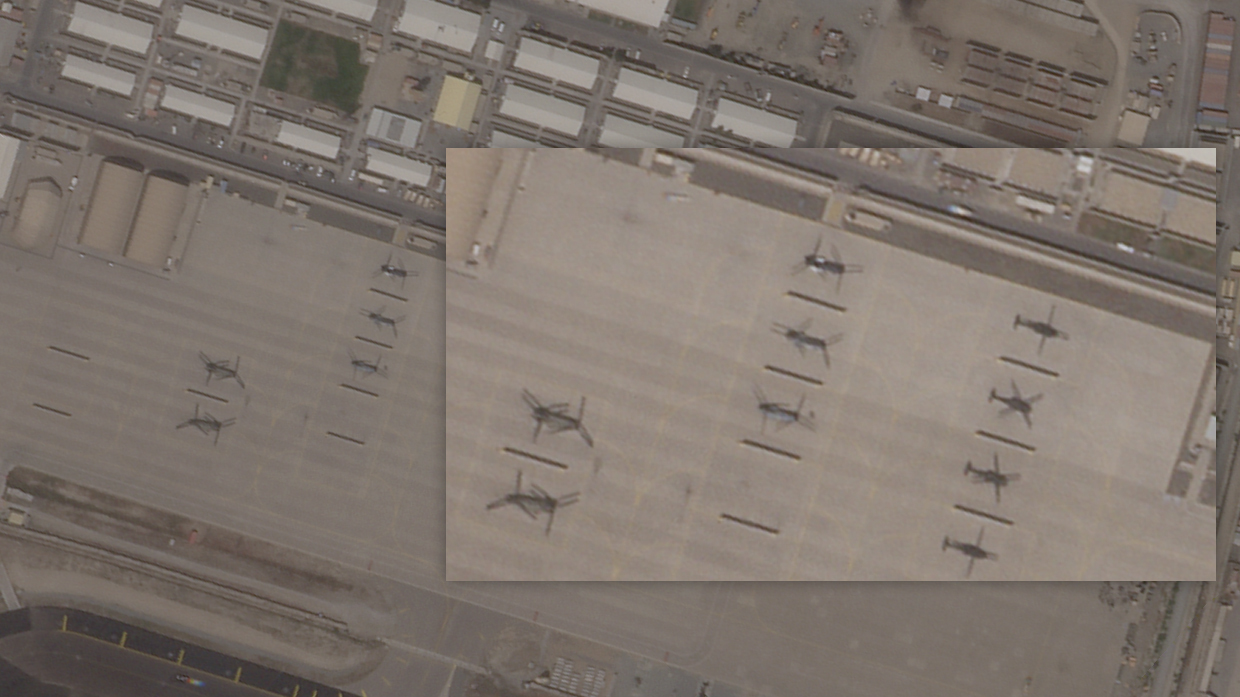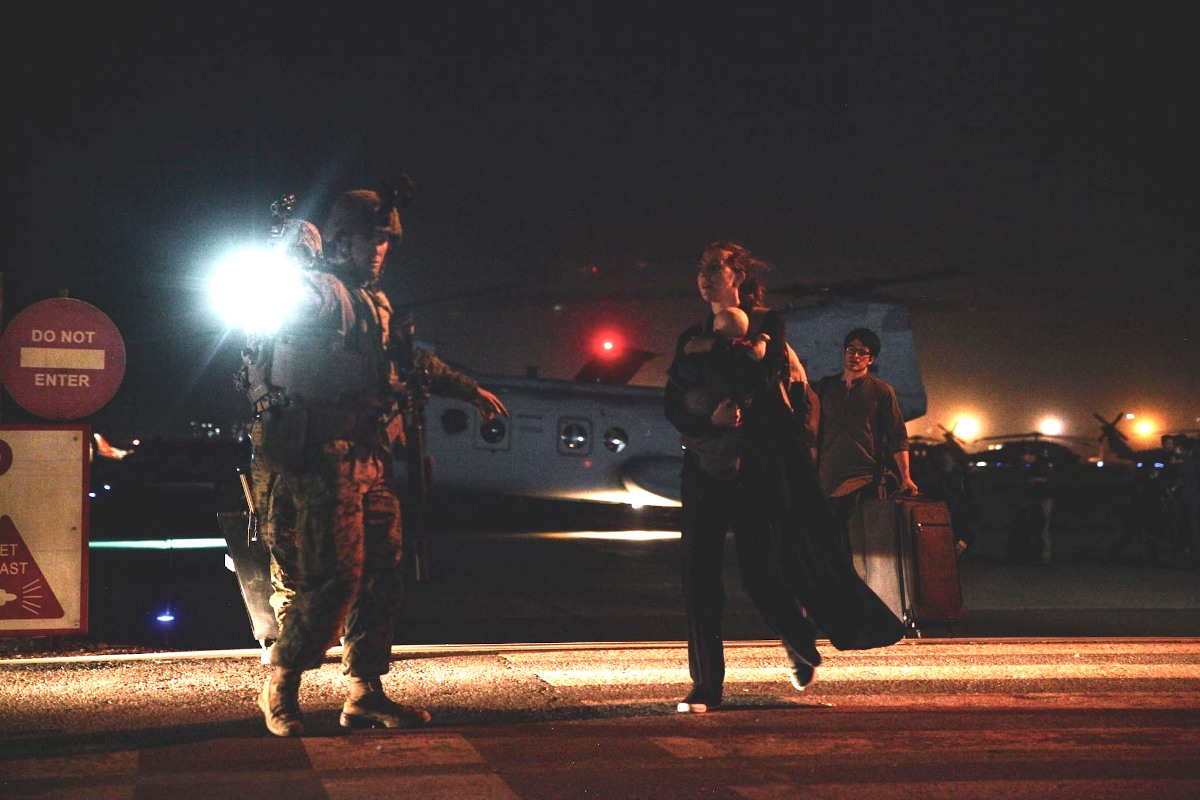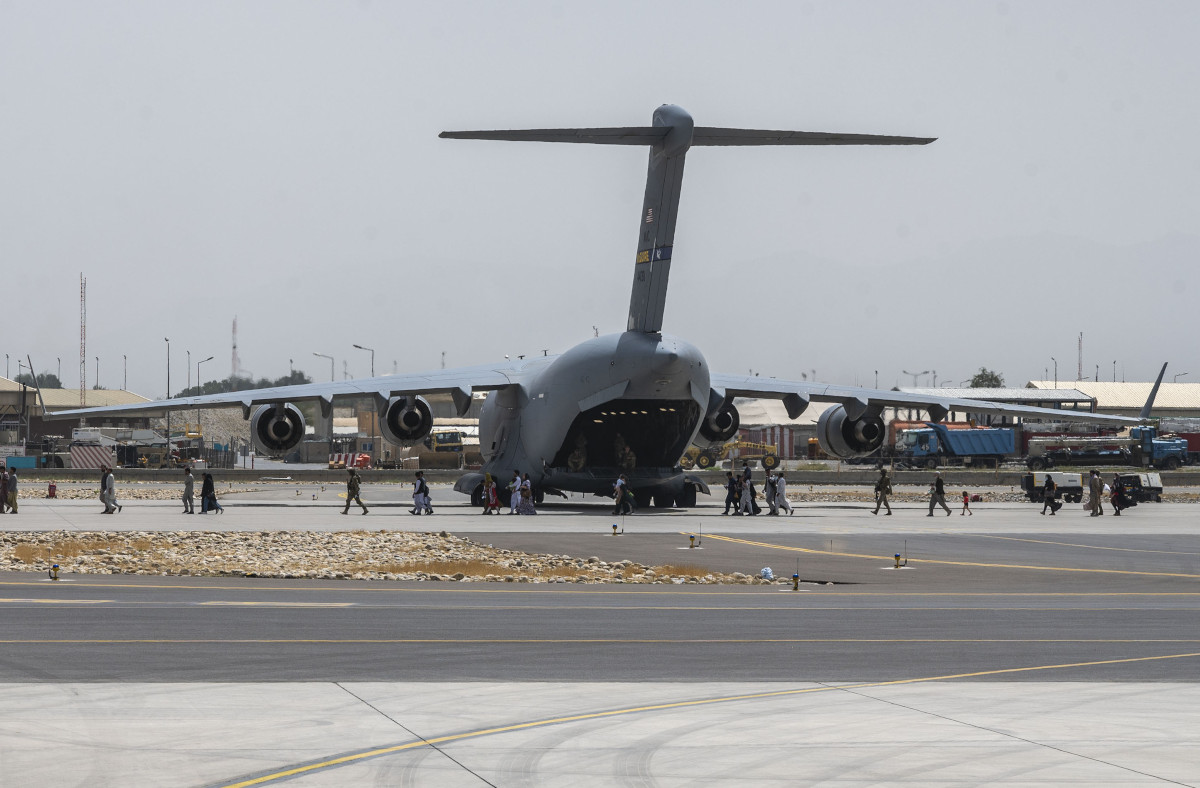The U.S. State Department has confirmed that seven CH-46E Sea Knight helicopters, also colloquially known as “Phrogs,” belonging to its Air Wing have been rendered inoperable and abandoned in Afghanistan as part of the ongoing evacuation effort. This non-combatant evacuation operation, or NEO, could very well be the last major mission ever for any Sea Knight belonging to the U.S. government, with the State Department already in the process of divesting its entire fleet.
In addition, the Pentagon says that this NEO could be the second largest in American military history, the other being the evacuation of Americans and others from South Vietnam in 1975. As The War Zone
has already reported, there is evidence that at least one of the State Department’s now-abandoned Sea Knights in Afghanistan, which it originally obtained second-hand from the U.S. Marine Corps, took part in both operations.

“The Department left seven CH-46 helicopters behind in Afghanistan which were rendered inoperable,” a State Department official, speaking on background, told The War Zone. “These helicopters were already being phased out of the Department’s inventory and were slated for eventual destruction due to age and supportability issues.”

That same individual also confirmed that there are no other aircraft of any kind belonging to the State Department’s Bureau of International Narcotics and Law Enforcement Affairs Office of Aviation, or INL/A, better known as the State Department Air Wing, left in Afghanistan. This means that a number of ex-U.S. Army HH-60L Black Hawk helicopters belonging to the Air Wing that had appeared in Kabul earlier this year have now been withdrawn.
It’s not clear how many other CH-46Es are still in the Air Wing’s inventory or how many of those airframes are actually flyable. Federal Aviation Administration (FAA) records show 23 Sea Knights registered to the State Department. This is the same number of these helicopters that it had on hand in 2018.

However, we also know that the FAA’s database includes other State Department aircraft that have been withdrawn from service and are presently in storage awaiting divestment. We also know that the FAA list includes the Phrogs now languishing in Afghanistan, including the one that may have also participated in Operation Frequent Wind in South Vietnam in 1975, which has the U.S. civil registration code N38TU. You can read more about that aircraft and the history of the Phrog in U.S. service, in general, which traces back to the arrival of the U.S. Marine Corps’ first CH-46As in the 1960s, here.
The State Department started getting its ex-Marine CH-46Es, which had gone through extensive overhauls to restore them to a like-new condition, in 2012. For years, for security reasons, these contractor-operated helicopters served as the primary mode of transportation for American diplomats and others between the U.S. Embassy in Kabul and nearby Hamid Karzai International Airport, among other destinations in Afghanistan, as part of a program known as Embassy Air.
On Aug. 15, 2021, as the Taliban moved into Kabul, the State Department’s Phrogs swung into action to help American diplomatic staff make their final trips from the Embassy to the airport. We don’t exactly what was done to them afterward to make them unusable and how permanent that process might be.


Regardless, Hamid Karzai International Airport has now been transformed into the nexus of the U.S. military’s evacuation operations, as well as those being carried out by other foreign military forces. U.S. Army General Mark Milley, the Chairman of the Joint Chiefs of Staff, said earlier today that, at present, the U.S. Air Force was conducting around 20 C-17A Globemaster III sorties every 24 hours out of the airport. Thousands of American troops, as well as other foreign forces, have continued to pour in to help provide security and otherwise help with the mission.

“We have a significant amount of rotary aviation, to include attack and lift helicopters,” Milley added. Pictures and videos that have emerged over the past few days have shown U.S. Army AH-64 Apache attack helicopters, as well as UH-60 Black Hawk and CH-47F Chinook transport helicopters. A number of special operations MH-60M Black Hawk and MH-47G Chinook helicopters, as well as AH/MH-6 Little Birds, all of which belong to the Army’s elite 160th Special Operations Aviation Regiment, also appeared at the airport this week.
Beyond the C-17As, a variety of fixed-wing aircraft have also been flying to and from Afghanistan, or are otherwise prepositioned in the Middle East to provide support, if necessary. This includes Air Force AC-130 gunships, B-52H bombers, F-16C/D Viper fighter jets, and MQ-9 Reaper drones, as well as Navy and Marine Corps F/A-18 Hornets and AV-8B Harrier jump jets, according to Milley.
However, “I don’t have the capability to go out and extend operations in Kabul,” Secretary of Defense Lloyd Austin added at today’s press conference alongside General Milley. “We don’t have the capability to go out and collect large numbers of people.”
American nationals and others the U.S. government is seeking to assist continue to face serious and potentially life-threatening hurdles in just getting to the airport. Regular Afghan citizens who have been trying to escape the country by air for days now are faring even worse.
There is no plan now for the U.S. military to begin conducting operations elsewhere in Afghanistan to help rescue any of those individuals who might be stranded across the country. If it comes to that, one has to wonder if it might have been valuable to have kept the State Department’s CH-46Es, which had various self-defense capabilities, including door and window-mounted 7.62mm M240D machine guns, flyable for just a little while longer.

There already remain significant questions about the true extent of U.S. government contingency planning and intelligence assessments that led to the decision to consolidate the entire NEO within the limited confines of Hamid Karzai International Airport rather than, say, spreading some capabilities to the larger and more secure air base at Bagram Airfield to the north of Kabul. The U.S. military transferred Bagram to the now-defunct Afghan government in July under highly controversial circumstances.
How long it might take for the U.S. military to expand the evacuation enterprise to the desired level, where American military aircraft will be able to get out 5,000 to 9,000 people every day, as well as if the Taliban will continue to allow those operations to continue unencumbered, remains to be seen. It’s also unclear what the final stages of the mission will look like.
The State Department’s comments about the CH-46Es are also the first confirmation that the U.S. government does not plan to extract all of its deployed materiel, even aircraft, at the end of its presence in Afghanistan. If there is a sudden need to close out the ongoing NEO rapidly, other helicopters may well get left behind, as well. This has raised questions about whether the U.S. military might conduct airstrikes to blow up any such assets that get abandoned after pulling out the last of its forces on the ground.
“There’s going to be plenty of time to talk about regrets,” General Milley said at today’s press conference. “Right now is not the time.”
It is somewhat sad to think that the helicopters that did such a good job at keeping our diplomatic staff safe are being left in a hostile country. These aircraft could very possibly be the last operational Phrogs the U.S. government will ever fly.
It’s also worth noting that variants of the Sea Knight, as well as its commercial analog, the Boeing Vertol V-107, are still flying elsewhere around the world, in various roles, including firefighting duties. At the U.S. military’s central boneyard at Davis-Monthan Air Force Base in Arizona alone there are dozens of Sea Knight airframes in storage, which could still be useful sources of spare parts. Still, airlifting the State Department’s Phrogs out of Afghanistan would likely cost hundreds of thousands of dollars and require significant time, while also taking up airlift capacity that could be better used to help people and more advanced helicopters evacuate the country.
No matter what, priorities are priorities. Lives and more advanced gear matters more. Although it would probably be better off destroying them on their way out than letting them be used as Taliban trophies.
Contact the author: joe@thedrive.com

